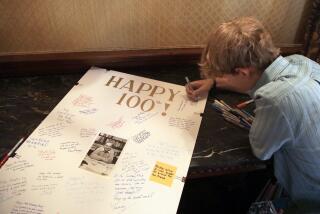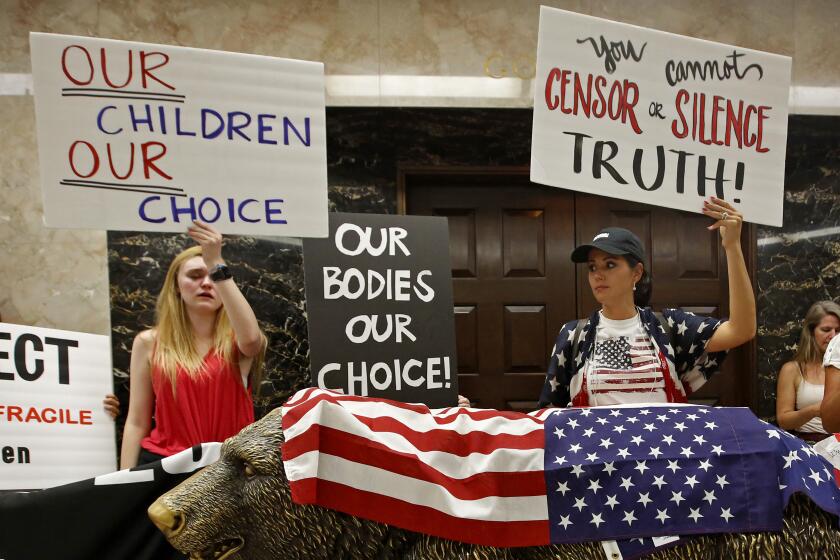Pauling Honored by Scientists at Caltech Event
- Share via
PASADENA — The Nobel laureate who first suggested the benefits of Vitamin C therapy for the common cold and laid the groundwork for discovering the structure of DNA was honored Friday by his colleagues on his 85th birthday.
Linus Pauling, who among his achievements showed that sickle-cell anemia is a hereditary, molecular disease, shared in the daylong celebration at Caltech.
“It was his example in building models of molecules and dealing with those models creatively that helped us in the discovery of the double helix,” said Dr. Francis Crick, co-discoverer of the DNA structure in 1962.
“Linus wasn’t always right, but whenever he was, he was brilliant,” Crick said.
The double helical structure of DNA, described by Crick and James Watson as a twisted ladder, was based largely on earlier work by Pauling in the 1940s.
DNA, found in every cell, is a genetic blueprint that determines all characteristics in living things, everything from hair color and foot size to the size and shape of tree leaves.
Of all the scientists who have made major contributions in the 20th Century, Pauling ranks well at the top and “should be regarded as the father of molecular biology,” Crick said.
Pauling taught at Caltech for more than 35 years and discovered the alpha helix as the basic structure of proteins.
In 1954, he was awarded the Nobel Prize in chemistry for scientific contributions that delineated the nature of chemical bonds.
“There are many fathers of molecular biology,” Pauling said Friday. “But if you were to name just one, I think it would have to be me. We worked very vigorously during that time (1930s-1940s) on what now is called molecular biology.”
Other Pauling ideas came quite unsuspectingly, his colleagues said.
“He first got the idea of the mechanism involved in sickle-cell anemia while on a train from Boulder (Colo.) to Chicago,” said Caltech chemistry professor Norman Davidson.
His theories on the benefits of Vitamin C megadoses to fight the common cold have been disproved.
“Whenever Linus has an idea, it’s audacious but never call it crazy,” Davidson said.
Pauling was awarded a second Nobel Prize in 1963 for his peace efforts, an honor largely based on a petition involving 10,000 scientists worldwide.
“It was his urging for the termination of nuclear testing that helped achieve the limited test-ban treaty in the early 1960s,” Davidson said.
Pauling, who was born in Portland, Ore., in 1901, obtained a Ph.D. from Caltech in 1925. In 1939, he published “The Nature of the Chemical Bond,” regarded as one of the most influential scientific books of the 20th Century.






